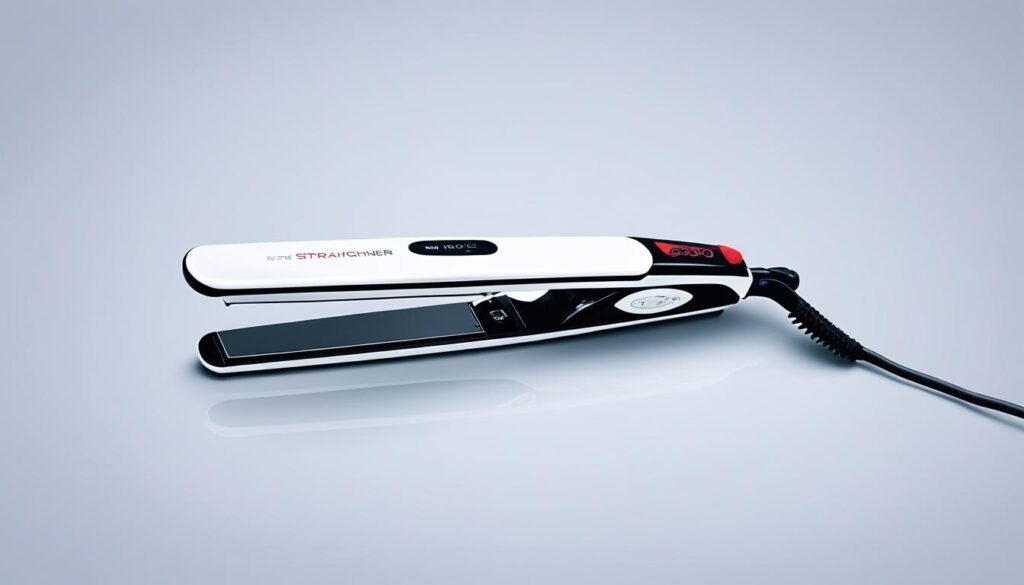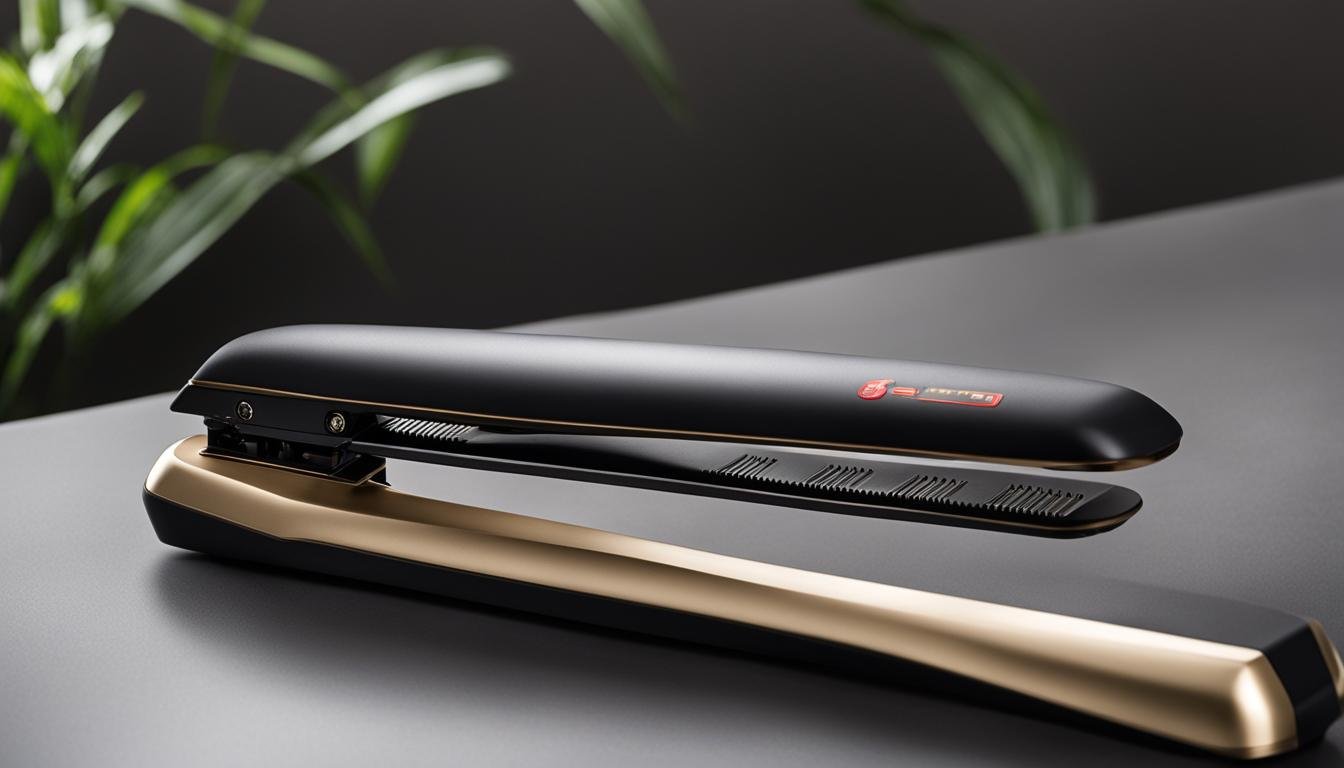When it comes to achieving sleek, smooth hair with a hair straightener, finding the right temperature is key. Different hair types require different temperatures to minimize damage and achieve the desired results. With the wide range of hair straightener temperature settings available, it can be confusing to determine the ideal temperature for hair straightening. However, by following a hair straightener temperature guide and considering your hair type, you can choose the optimal temperature for using a hair straightener effectively and safely.
The Optimal Temperature Range for Different Hair Types
When using a hair straightener, it’s crucial to find the ideal temperature that suits your hair type. The temperature setting can significantly impact the effectiveness of the straightening process and the health of your hair. By understanding the recommended temperature ranges for different hair types, you can achieve the best results while minimizing potential damage.
Straight Hair
If you have naturally straight hair, you may be able to achieve your desired results at a lower temperature. The recommended temperature range for straight hair is typically between 300°F (150°C) to 350°F (180°C). Start with a lower temperature and gradually increase if needed, as excessive heat can still cause damage even to straight hair.
Wavy Hair
For those with wavy hair, a slightly higher temperature range is often required to effectively straighten the hair. The ideal temperature range for wavy hair is generally between 350°F (180°C) to 375°F (190°C). This range helps to tame the waves and provide a smooth, straight finish.
Curly or Coarse Hair
Curly or coarse hair requires a higher temperature to achieve the desired results due to its natural texture. The recommended temperature range for curly or coarse hair is typically between 375°F (190°C) to 410°F (210°C). Higher temperatures help to effectively straighten and smooth out the hair strands.
Fine or Damaged Hair
Individuals with fine or damaged hair should be cautious with the temperature settings to prevent further damage. It is recommended to use a lower temperature range of 250°F (120°C) to 300°F (150°C) for fine or damaged hair. Be gentle and avoid excessive heat to protect the hair from additional stress and breakage.
Remember, these temperature ranges provide a general guideline, and it’s essential to assess your hair’s response to heat. Always start with a lower temperature and gradually increase if necessary. Pay attention to any signs of hair damage, such as excessive dryness or breakage, and adjust the temperature accordingly.
To effectively choose the right temperature for your hair, consider investing in a hair straightener with adjustable heat settings. This allows you to customize the temperature to fit your specific needs. Additionally, using a heat protectant spray or serum before applying heat to your hair can help minimize damage and enhance its overall health.
| Hair Type | Recommended Temperature Range |
|---|---|
| Straight Hair | 300°F (150°C) – 350°F (180°C) |
| Wavy Hair | 350°F (180°C) – 375°F (190°C) |
| Curly or Coarse Hair | 375°F (190°C) – 410°F (210°C) |
| Fine or Damaged Hair | 250°F (120°C) – 300°F (150°C) |
Tips for Choosing the Right Temperature and Protecting Your Hair
When using a hair straightener, it’s crucial to choose the right temperature for your hair type to minimize damage and achieve the best results. Here are some helpful tips for selecting the optimal temperature and protecting your hair:
- Know Your Hair Type: Understanding your hair type is essential for finding the right temperature. Fine or damaged hair requires lower temperatures, while thick or coarse hair can handle higher heat.
- Start Low and Gradually Increase: It’s always better to start with a lower temperature setting and increase it gradually until you find the one that works for your hair. This prevents excessive heat exposure and potential damage.
- Consider Heat Protectant Products: Using a heat protectant spray or serum before straightening your hair can add an extra layer of protection and minimize heat damage.
- Use the Temperature Guide: Many hair straighteners come with a temperature guide that suggests suitable settings for different hair types. Refer to this guide as a starting point to find the recommended temperature range for your specific hair type.
- Monitor Your Hair’s Response: Pay close attention to your hair’s response when using different temperature settings. If you notice excessive dryness, frizz, or breakage, it may be a sign that the temperature is too high for your hair.
By following these tips, you can choose the right temperature for your hair straightener and protect your hair from unnecessary damage. Remember to prioritize the health and well-being of your hair to achieve beautiful, straightened locks.

Expert Advice on Straightening Hair Safely
Experts in the hair industry offer valuable advice on how to straighten hair safely and minimize damage. By following these expert tips, you can ensure that using a hair straightener is both effective and safe for your hair.
1. Use a Safe Temperature
To protect your hair from excessive heat damage, it’s crucial to use a hair straightener at a safe temperature. The recommended safe temperature range for hair straightening is between 300°F (150°C) and 375°F (190°C).
Using too high of a temperature can lead to brittle, frizzy hair and even cause permanent damage. Always refer to the manufacturer’s guidelines for your specific hair straightener model to understand the recommended temperature settings.
2. Start with a Lower Temperature
If you are new to straightening your hair or have sensitive or fine hair, it’s best to start with a lower temperature. Gradually increase the temperature only if necessary, and always monitor your hair’s reaction.
Starting with a lower temperature allows you to assess how your hair responds to heat and minimize the risk of heat damage. Remember, it’s better to be cautious and prioritize your hair’s health.
3. Use Heat Protectant Products
Prior to using a hair straightener, apply a heat protectant product to shield your hair from the heat. Heat protectant sprays or serums create a barrier on the hair strands, reducing the direct impact of high temperatures.
Ensure that the heat protectant product is evenly distributed throughout your hair before using the straightener. This additional layer of protection can go a long way in maintaining the health and integrity of your hair.
4. Avoid Overlapping and Excessive Passes
When straightening your hair, avoid going over the same section repeatedly or making excessive passes with the straightener. This can lead to overheating and cause irreparable damage to your hair.
Instead, work with smaller sections of hair, and make one smooth pass from the root to the tip. If necessary, you can go over a section again, but try to limit it to one additional pass.
5. Don’t Forget to Hydrate and Condition
To counteract the drying effects of heat styling, ensure that you hydrate and condition your hair regularly. Use a moisturizing shampoo and conditioner specifically designed for heat-damaged or chemically treated hair.
Incorporate deep conditioning treatments into your hair care routine to replenish moisture and restore vitality to your hair. This helps to maintain its overall health and minimize the risk of damage caused by heat styling.
| Hair Type | Recommended Temperature Range |
|---|---|
| Straight or Fine Hair | 300°F (150°C) – 325°F (165°C) |
| Wavy or Medium-Thick Hair | 325°F (165°C) – 375°F (190°C) |
| Curly or Thick Hair | 375°F (190°C) – 425°F (220°C) |
Maintaining Hair Health While Straightening
While making your hair sleek and straight with a hair straightener, it’s crucial to prioritize hair health and minimize potential damage. By following these essential tips, you can keep your hair healthy and beautiful:
1. Start with Clean, Dry Hair: Before using a hair straightener, ensure your hair is clean and completely dry. Wet or damp hair is more susceptible to damage from heat styling.
2. Protect with Heat Protectant: Apply a heat protectant spray or serum to your hair before straightening. This creates a protective barrier that helps to minimize heat damage and keep your hair healthy.
3. Choose the Right Temperature: Select an appropriate temperature for your hair type. Fine or damaged hair generally requires a lower temperature, while thick or coarse hair can handle higher heat. Refer to the manufacturer’s instructions or consult a hair professional for guidance.
4. Use Proper Technique: When straightening your hair, glide the straightener slowly and smoothly through small sections of hair. Avoid clamping or pulling too tightly, as this can lead to breakage and damage.
By following these tips and using a safe temperature for your hair straightener, you can achieve the desired sleekness while maintaining the health and integrity of your hair.
